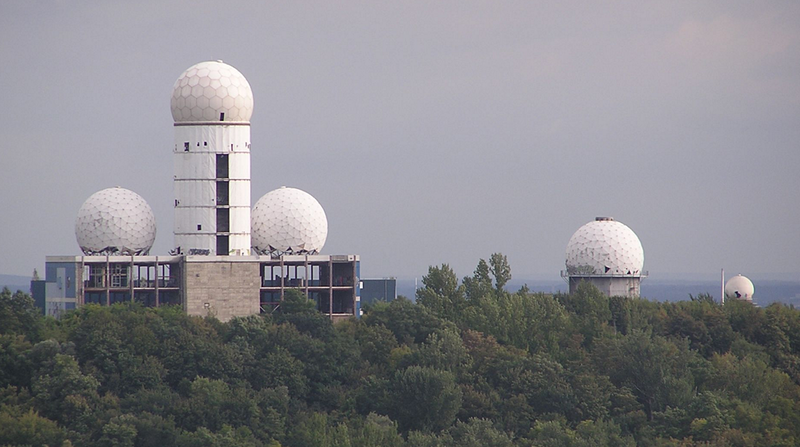Stephen Graham has written an interesting text about the making of geological strata, namely, how the Anthropocene is changing the surface of the earth at such a rapid rate that it could be measured as a vertical geography tracking the earth’s change. He uses Berlin’s Teufelsberg as a particularly charged example. Read Graham in partial below, in full via Places Journal.
From the wooded summit in the Grunewald, a large expanse of the flat East European plain stretches out to a hazy horizon. The glitzy new landmarks of post-Cold War Berlin stud the distant panorama; the needle-like TV tower of Alexanderplatz is slightly farther away. Teufelsberg, at a height of 400 feet, is comfortably the highest spot in Berlin. An expansive and verdant peak, it might easily be mistaken for a geological feature with a history stretching back millions of years, or, perhaps, as the remnant of moraine shunted here by some primeval ice sheet.
Yet Teufelsberg is barely half a century old. Beneath its soils lie not a complex geological stratigraphy but rather the dark ruins of verticalized total war. Between the summit and the earlier surface of the land lies one-seventh of all the rubble removed from the bombed-out cities of Germany in the arduous postwar clearing and reconstruction that went on between 1945 and 1972. As the late W. G. Sebald recorded, in “The Natural History of Destruction,” by the end of World War II, “there were 31.1 cubic meters of rubble for every inhabitant of Cologne and 42.8 cubic meters for every inhabitant of Dresden.” 1
Teufelsberg — literally, the “devil’s mountain,” in German — was formed from the remains of a large part of pre-war Berlin, from the 50,000 burnt and bombed-out buildings that were reduced to 75 million tons of rubble. Beneath the deceptively pastoral peak, where contemporary Berliners picnic in summer and sled in winter, there rests a dead city: the grim result of the techno-industrial processes of aerial annihilation and modern warfare. It is of course perversely fitting that the dominating new peak would become, in the early 1960s, the site of one of the largest listening posts of the U.S. National Security Agency; today the tattered structures of the abandoned Field Station Berlin are a tourist attraction.
Teufelsberg serves as a powerful reminder of the capacity of humans to forge the very ground beneath our feet — to manufacture our own geological history. This is a capacity we often overlook. Modern humans tend to naturalize the ground; to construe the earth — terra firma — as the immutable and natural product of geological processes working over eons. This understandable tendency leads also to a predominant sense of ground as inherently horizontal — the surface of the earth stretching to and beyond the horizon. Yet this perspective underplays the importance of the vertical composition of ground. For the terrestrial material of our rapidly urbanizing species is increasingly anything but “natural”: it is the vertical accumulation of manufactured ground. The making of geological strata is an essential but often neglected component of the mass shift of humankind to urban living; it is also a crucial by-product of the industrialized technologies of construction, agriculture, mining, and warfare.
Geologists now estimate that the deliberate shift of material by humans due to construction, agriculture, and mining, as well as the generation and movement of waste, now amounts to around 59 billion tons a year. 2 Rising levels of global urban development mean this figure is growing fast. 3 Little wonder that geologists are on the verge of formally declaring that we have moved from the post-glacial Holocene to the new geological epoch of the Anthropocene: the age in which human agency shapes land and soil, the very geology of the earth, as well as the atmosphere, biosphere, and oceans, more powerfully than any other force.
